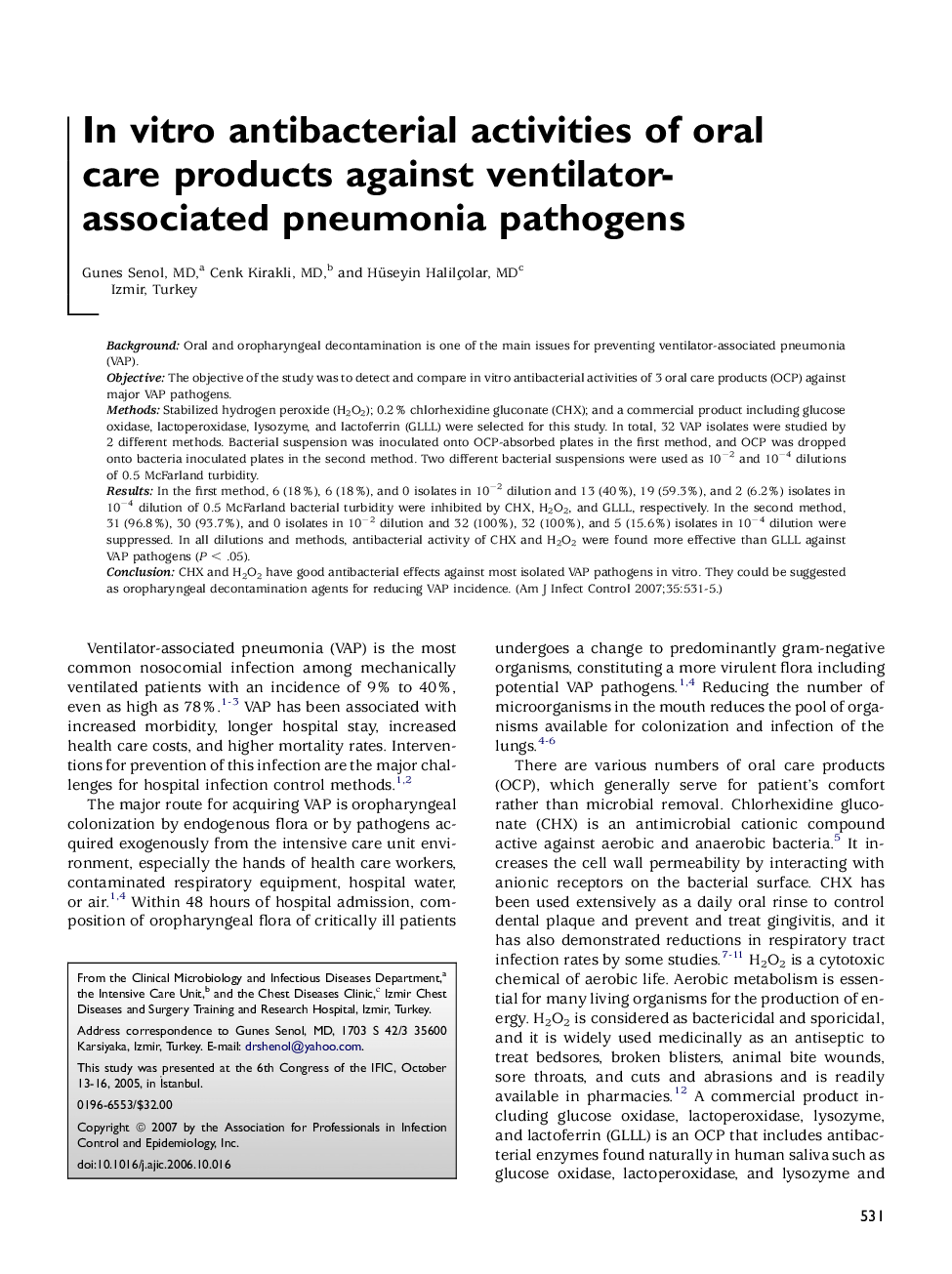| Article ID | Journal | Published Year | Pages | File Type |
|---|---|---|---|---|
| 2640391 | American Journal of Infection Control | 2007 | 5 Pages |
BackgroundOral and oropharyngeal decontamination is one of the main issues for preventing ventilator-associated pneumonia (VAP).ObjectiveThe objective of the study was to detect and compare in vitro antibacterial activities of 3 oral care products (OCP) against major VAP pathogens.MethodsStabilized hydrogen peroxide (H2O2); 0.2% chlorhexidine gluconate (CHX); and a commercial product including glucose oxidase, lactoperoxidase, lysozyme, and lactoferrin (GLLL) were selected for this study. In total, 32 VAP isolates were studied by 2 different methods. Bacterial suspension was inoculated onto OCP-absorbed plates in the first method, and OCP was dropped onto bacteria inoculated plates in the second method. Two different bacterial suspensions were used as 10−2 and 10−4 dilutions of 0.5 McFarland turbidity.ResultsIn the first method, 6 (18%), 6 (18%), and 0 isolates in 10−2 dilution and 13 (40%), 19 (59.3%), and 2 (6.2%) isolates in 10−4 dilution of 0.5 McFarland bacterial turbidity were inhibited by CHX, H2O2, and GLLL, respectively. In the second method, 31 (96.8%), 30 (93.7%), and 0 isolates in 10−2 dilution and 32 (100%), 32 (100%), and 5 (15.6%) isolates in 10−4 dilution were suppressed. In all dilutions and methods, antibacterial activity of CHX and H2O2 were found more effective than GLLL against VAP pathogens (P < .05).ConclusionCHX and H2O2 have good antibacterial effects against most isolated VAP pathogens in vitro. They could be suggested as oropharyngeal decontamination agents for reducing VAP incidence.
